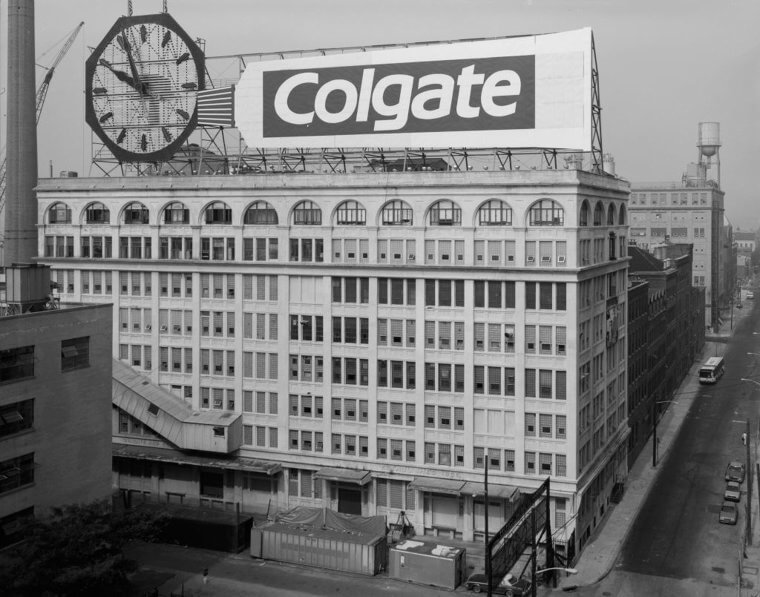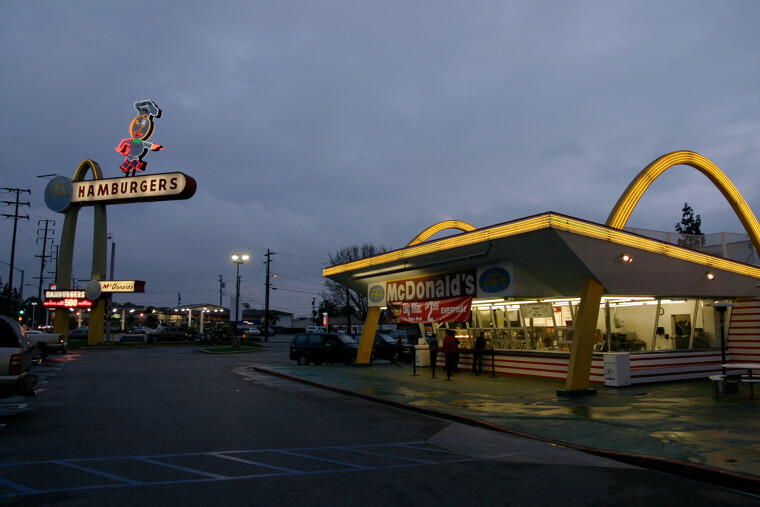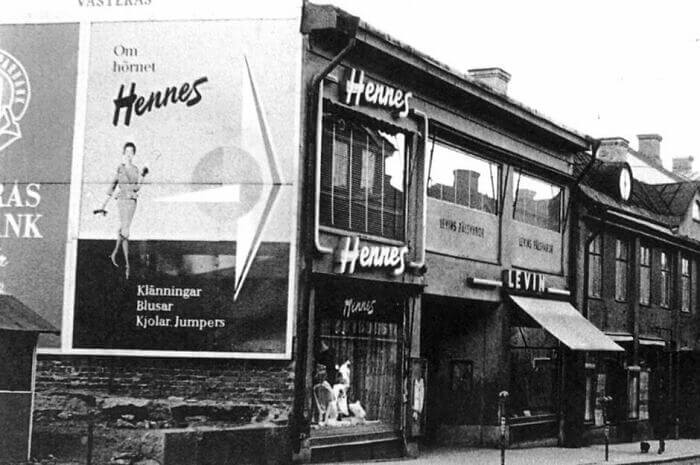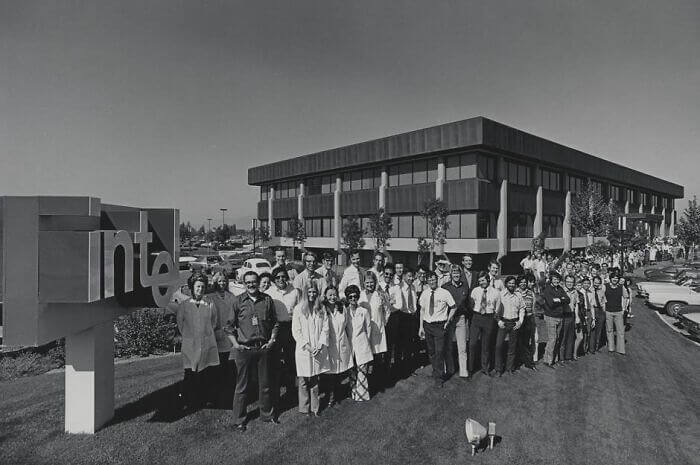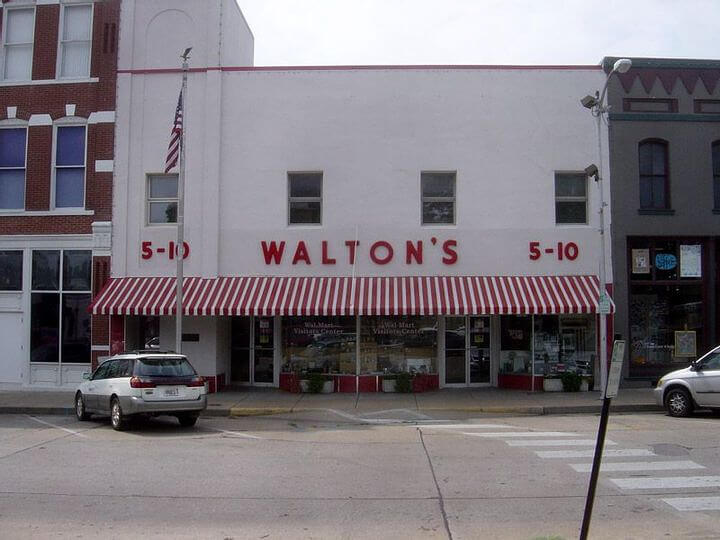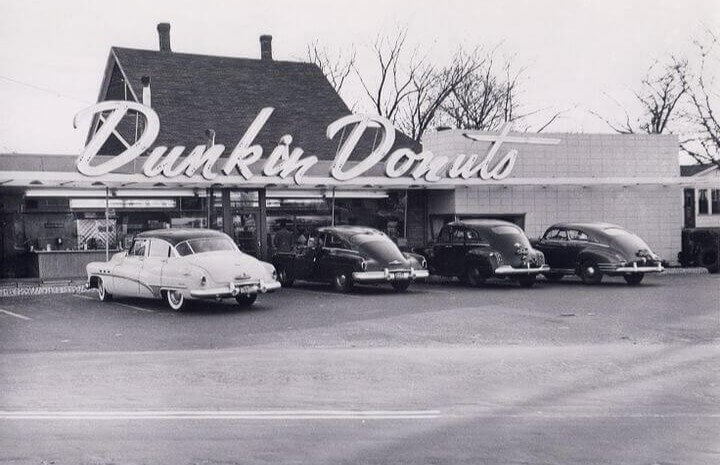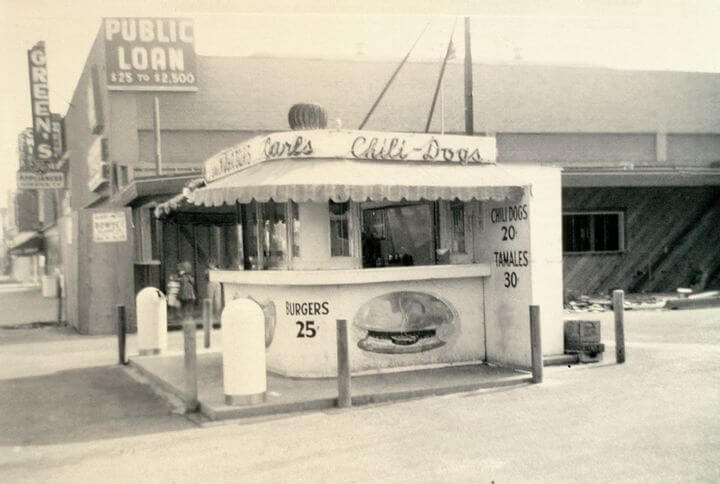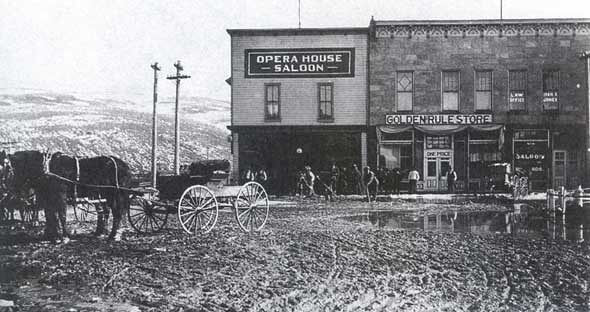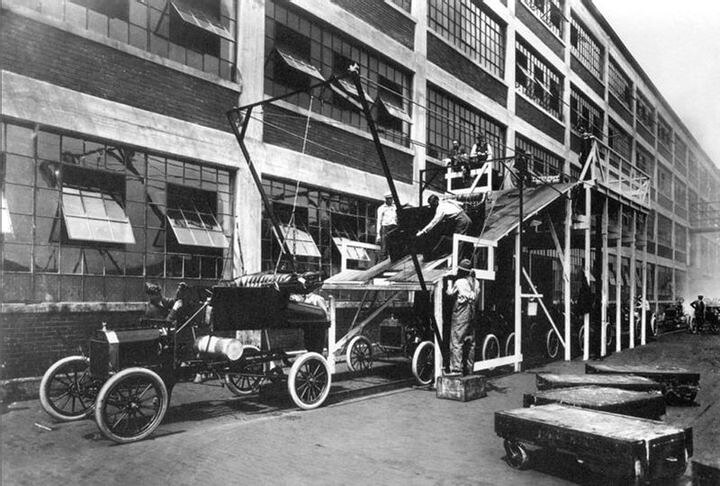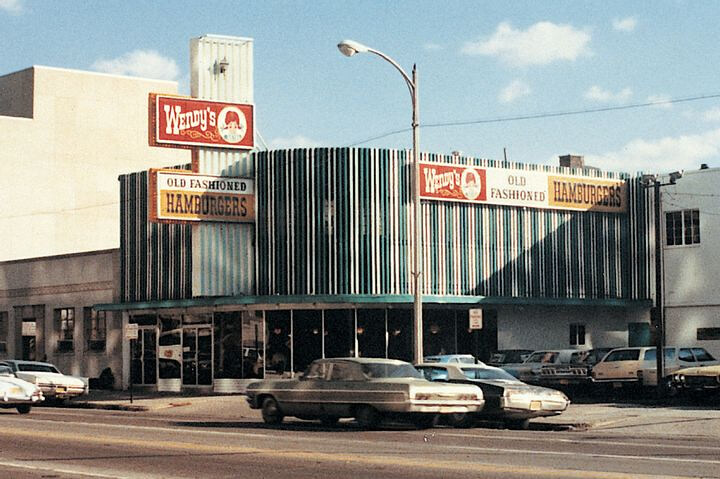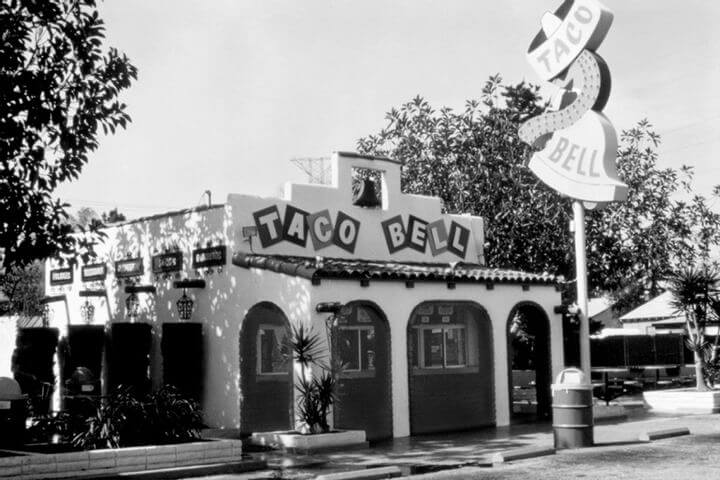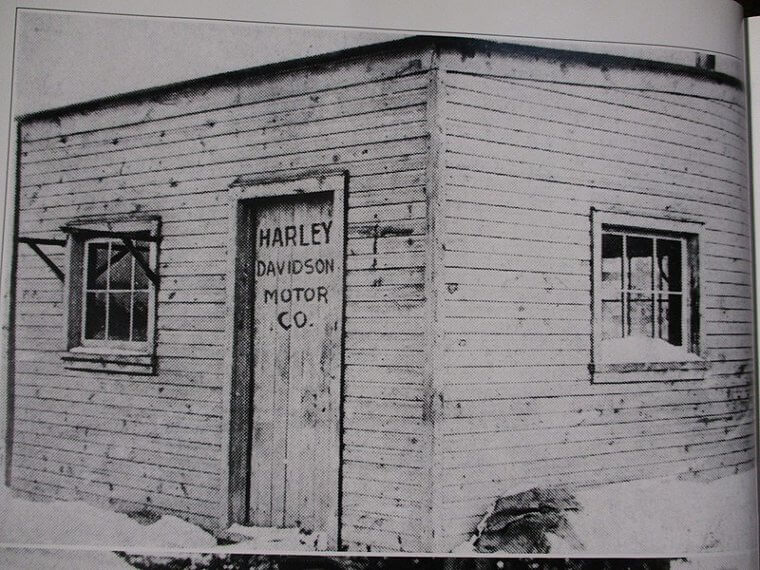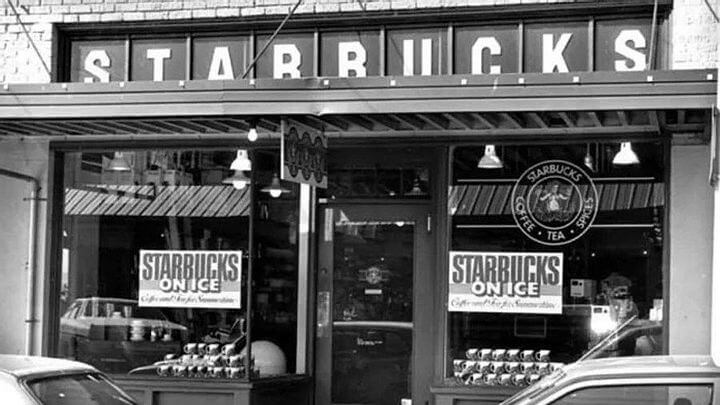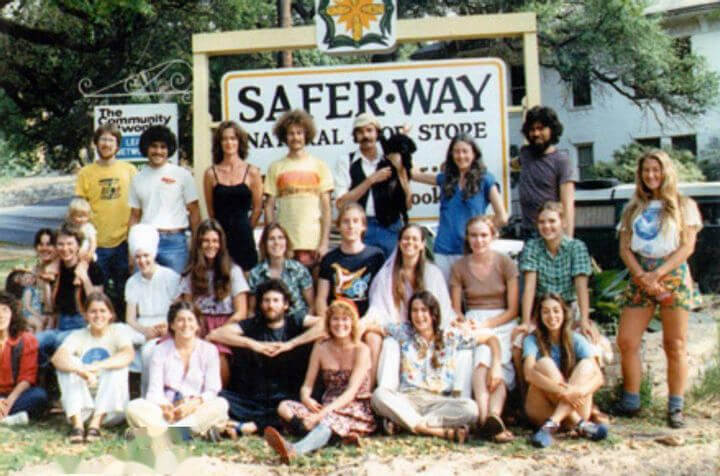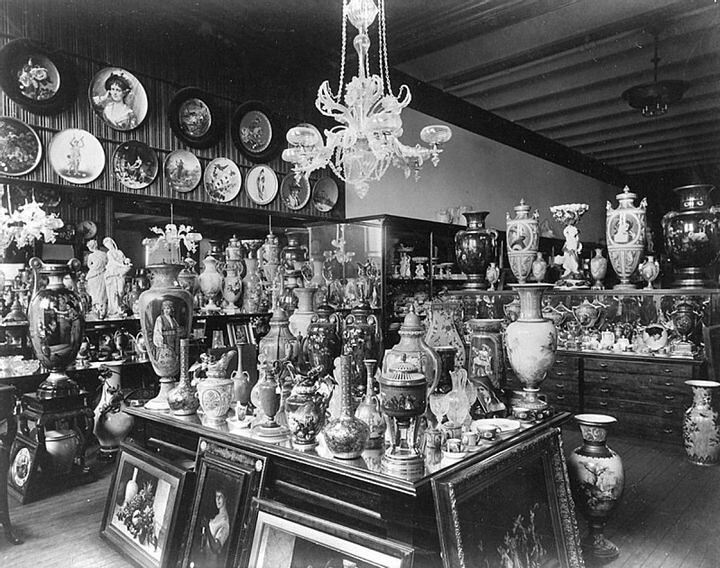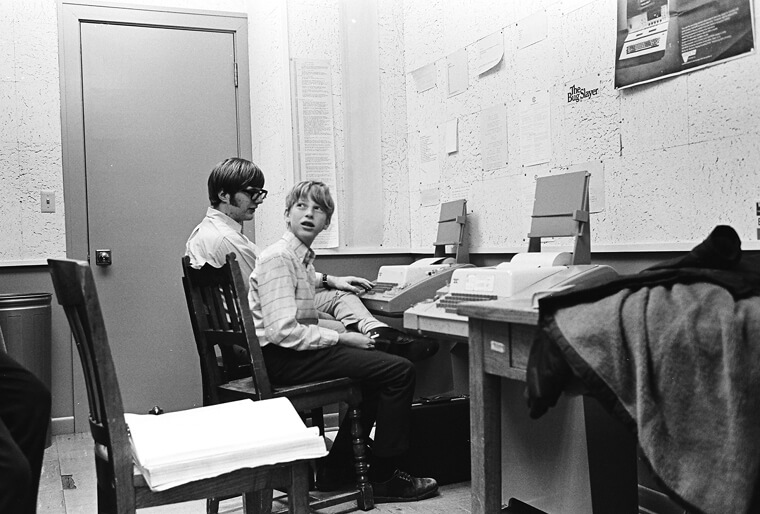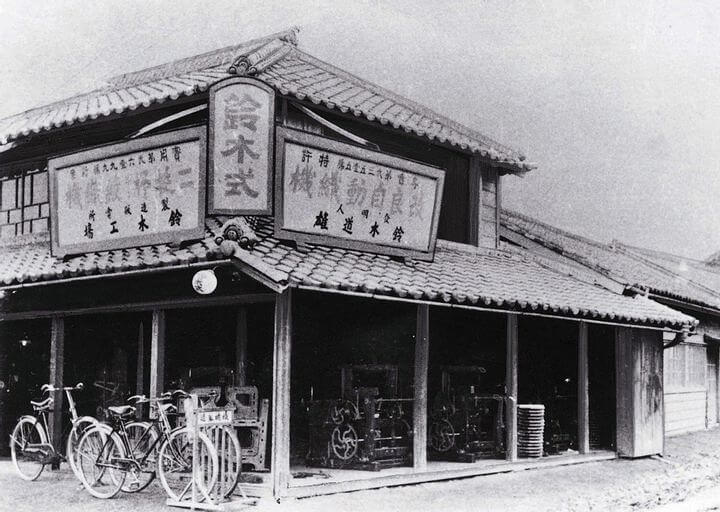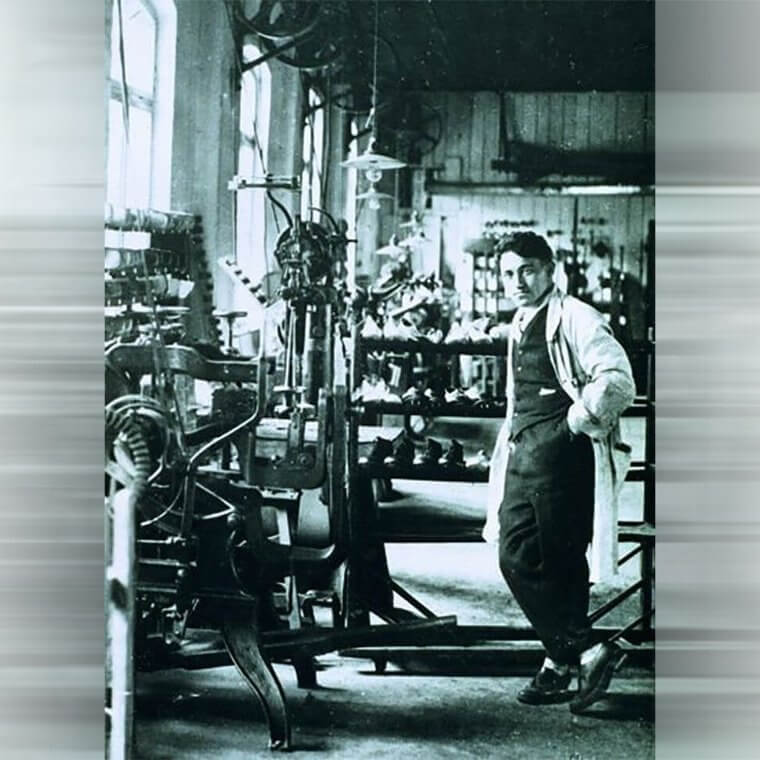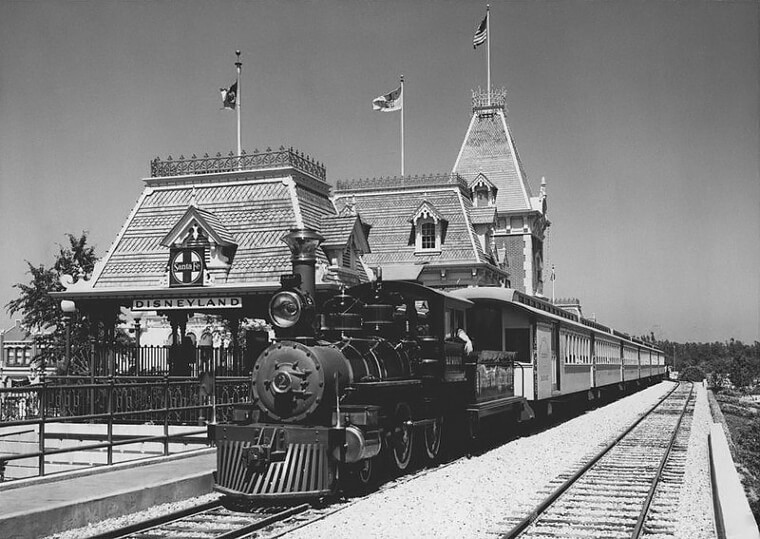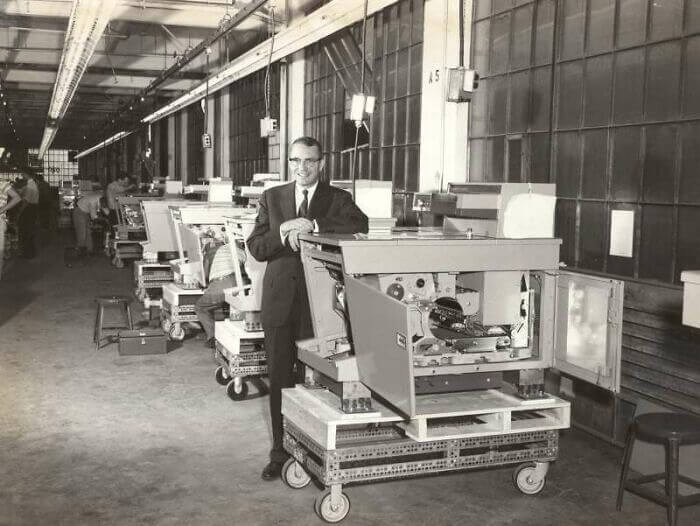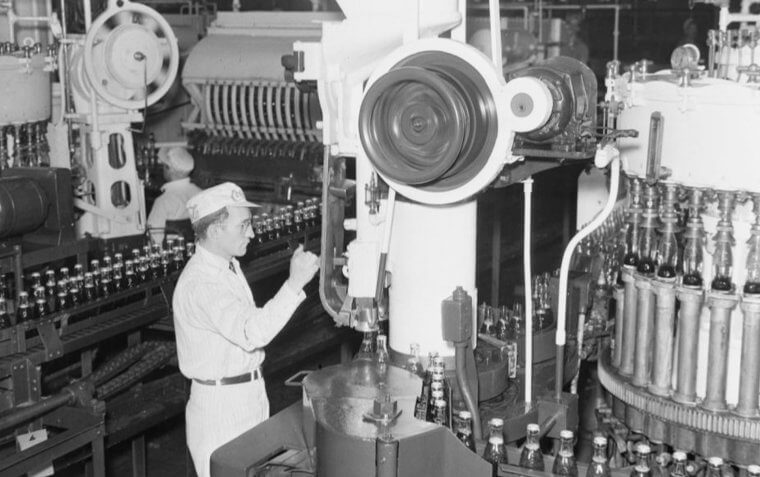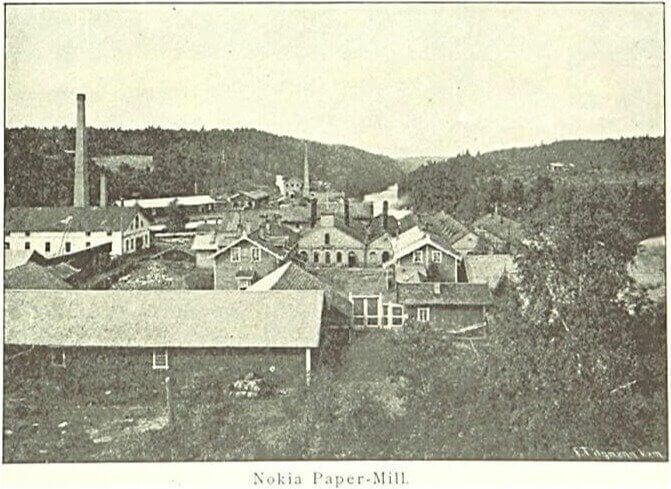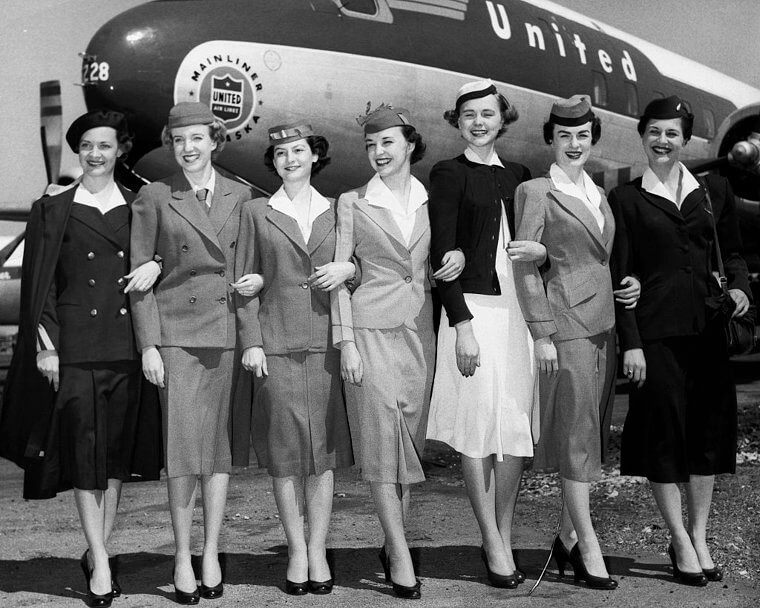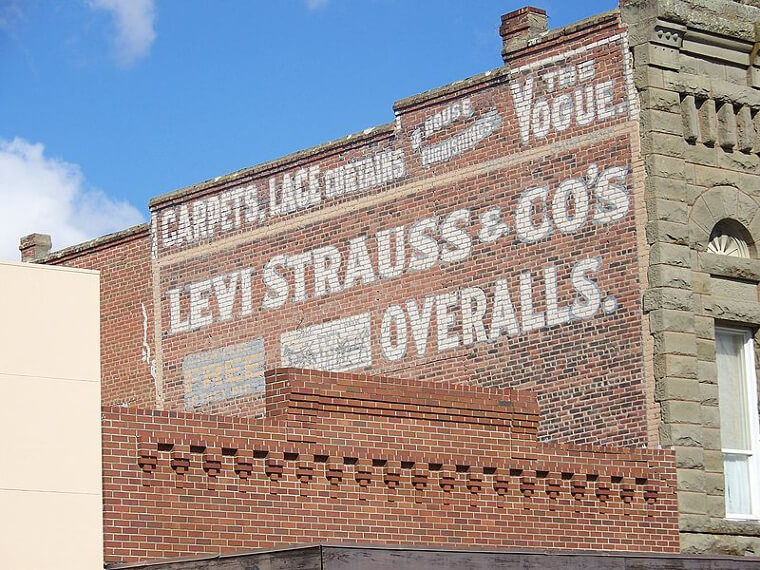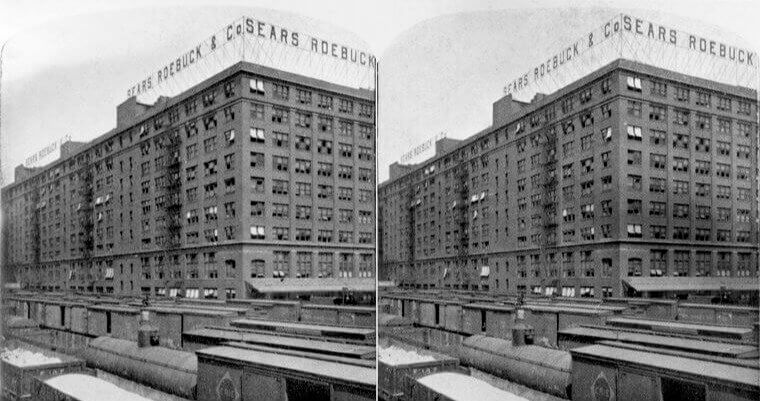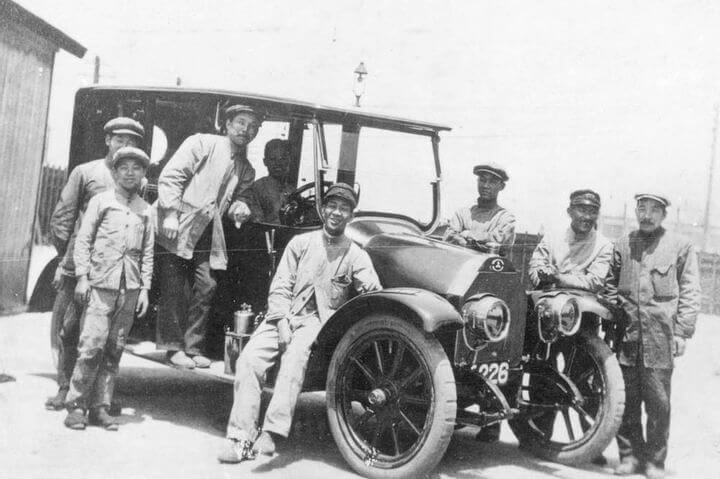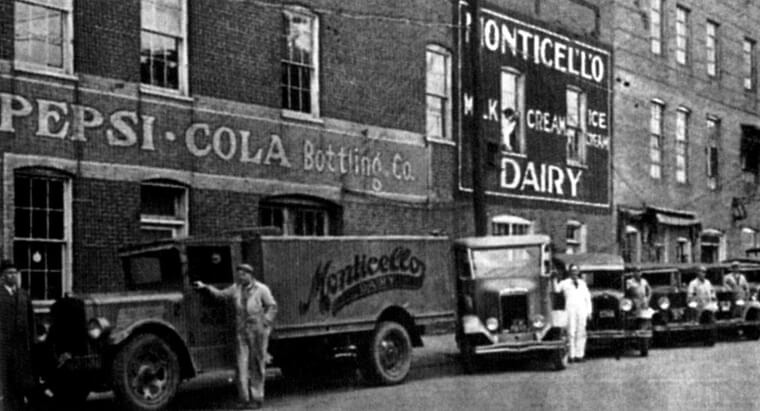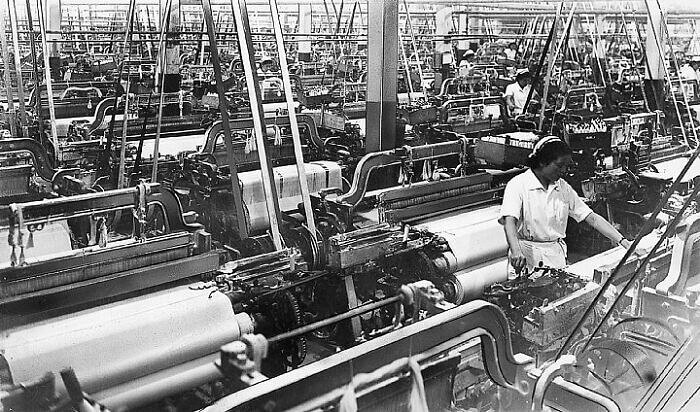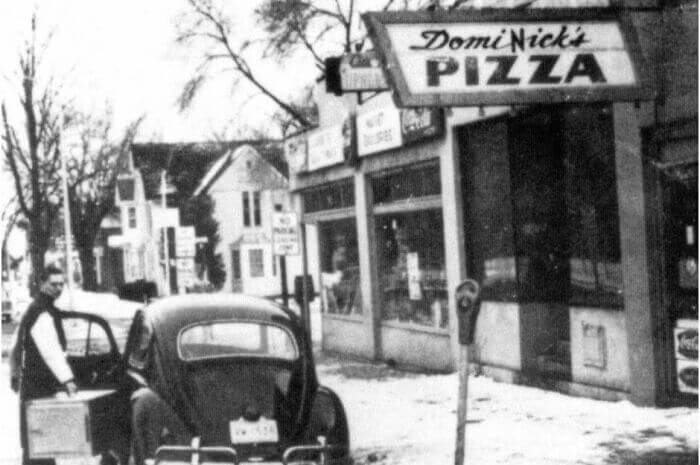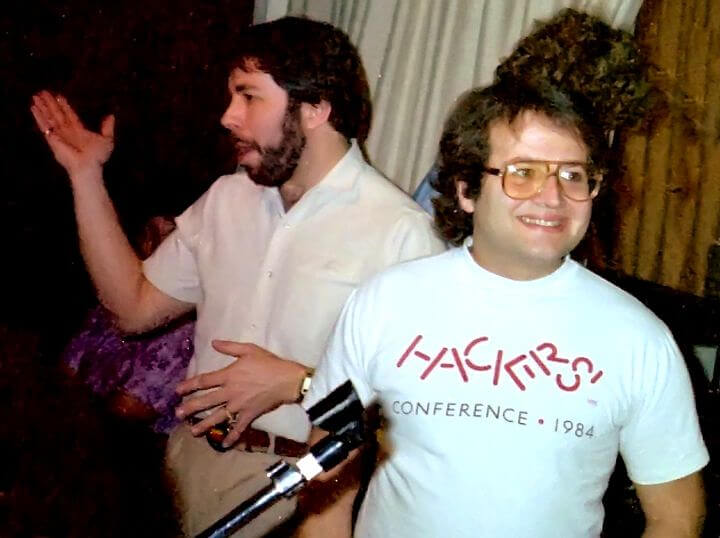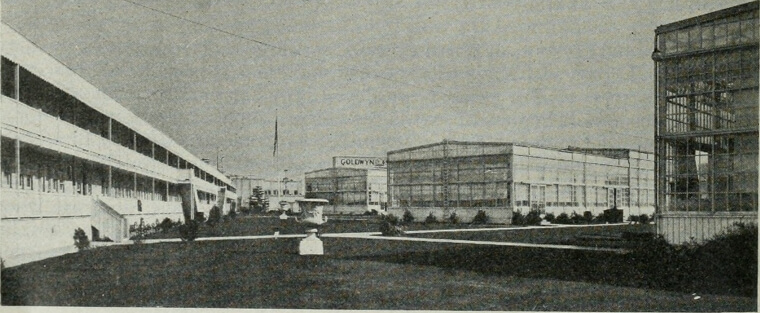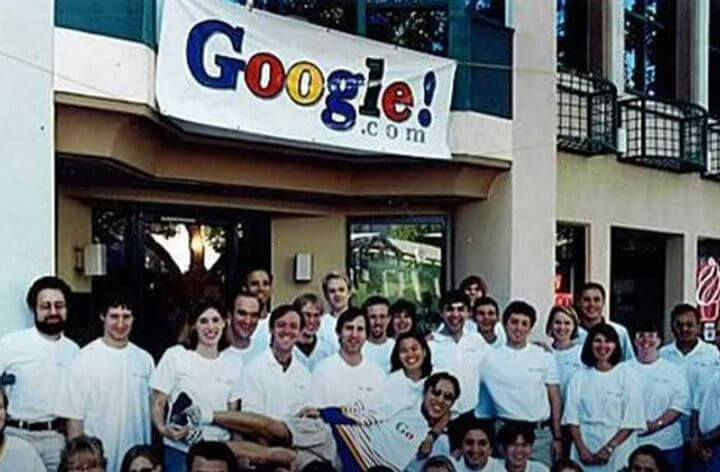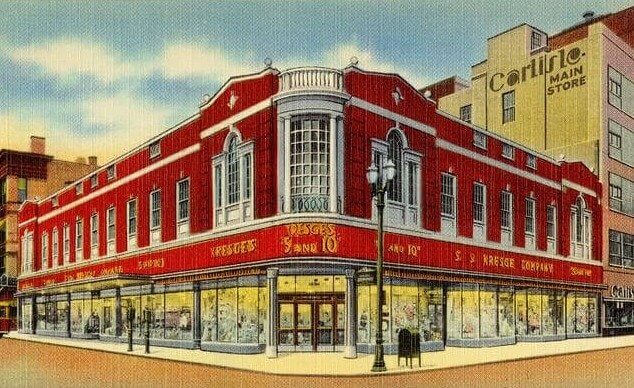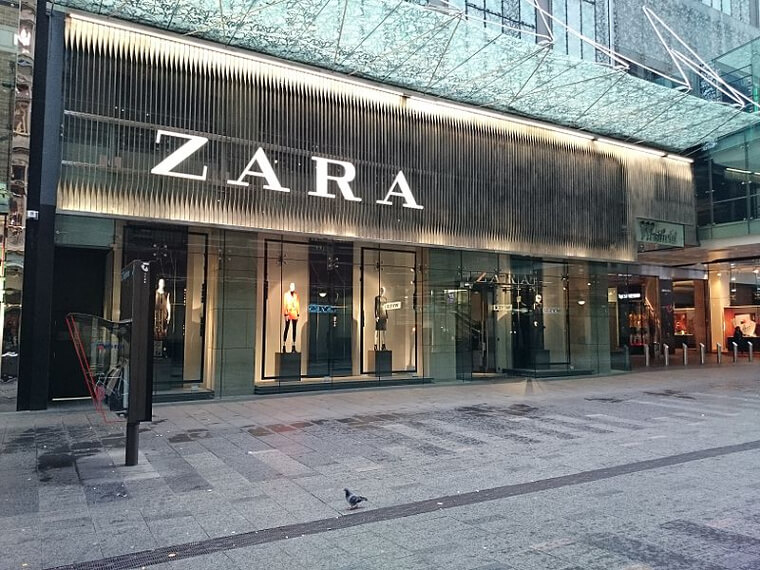Dairy Queen - 1940
In 1940, John Fremont McCullough and his son Alex conjured up a secret formula for their legendary soft-serve ice cream. But they needed a stage to showcase their frozen creation. Enter Sherb Noble, a daring friend who agreed to sell their icy delight at his own ice cream store. It instantly became a hit, with customers coming back and raving about it. Noble and the McCulloughs united their powers, opening the inaugural Dairy Queen location in Joliet, Illinois.
And now, with a staggering 6,800 locations worldwide, the Dairy Queen dynasty reigns supreme. Clearly, ice cream can really change lives.
Colgate - 1873
Long before it became the go-to toothpaste brand, it began as a humble soap company in 1806. William Colgate, an English immigrant with a knack for soap and candles, laid the foundation. In 1873, Colgate took a bold turn, venturing into the world of toothpaste. Initially sold in jars, it wasn't until 1896 that Colgate hopped on the tube bandwagon. Now you can find this toothpaste in over 200 different countries.
This has been the top toothpaste for generations, generating billions and billions of dollars. And it all started with a soap maker in the 1800s!
Samsung - 1938
Lee Byung-chul hailed from a well-to-do family and had big dreams for his trading business in 1938. Little did he know that his idea would evolve into one of South Korea's colossal businesses. As time ticked on, Samsung ventured into new territories like insurance, securities, and retail, flexing its diverse muscles. But in the '60s, Samsung set its sights on the electronics industry, and everything changed from that moment on.
They took over the electronic industry and are one of the world's largest producers of phones and consumers of electricity.
McDonald’s - 1940
It all started in sunny San Bernardino, California; back in 1940, the birth of the ultimate fast-food empire, McDonald's, began. Enter the McDonald brothers, Richard and Maurice, who had a vision that would forever change the restaurant game. Their revolutionary "Speedee service system" laid the foundation for modern-day fast-food joints. Along came Ray Kroc, armed with a franchise agreement and an aggressive game plan. e swooped in, snatched the reins from the brothers, and transformed McDonald's into a global sensation.
Now McDonald's might be synonymous with an American diet and fast food culture, but it's taken over and can be found on almost every corner of the earth.
H&M - 1947
H&M is the fashion powerhouse loved by trendsetters worldwide. You've probably pondered the meaning of those three letters, and the truth is right here. n 1947, Erling Persson flung open the doors to his Swedish store, named Hennes, which means "hers" in Swedish, specializing in women's clothing. But wait, there's more! Two years later, Persson scooped up a hunting apparel store called Mauritz Widforss and introduced a stylish menswear collection.
Combining Hennes and Mauritz gave birth to the iconic brand we know as H&M. It's a surprising blend of fashion mastery that has taken the world by storm, with 5,000 stores to prove it!
Intel - 1968
When it comes to technology powerhouses, Intel takes the crown with its groundbreaking semiconductor chips that power our computers. But did you know the story behind its name? It's a tale of avoiding unintended puns and trademark negotiations. In the early days, founders Gordon E. Moore and Robert Noyce, along with investor Arthur Rock, toyed with the idea of naming the company "Moore Noyce." However, they quickly realized that it sounded a bit off.
Intel is comparable to Samsung and dominates the world of computers. Today they're worth over 130 billion dollars.
Walmart - 1962
The surprising story behind the retail giant Walmart actually starts with J.C. Penney. In 1962, a former J.C. Penney employee named Sam Walton had a brilliant idea to skyrocket sales by keeping prices irresistibly low. With that vision in mind, he opened his very first store, charmingly named Walton's Five and Dime. Fast forward to today, and that very location has transformed into the Walmart Museum, preserving the humble beginnings of this retail powerhouse.
Today Walmart is crowned as the world's largest company by revenue and rakes in around US$570 billion a year, with Walton's family still holding a mighty 50% ownership stake.
Dunkin’ Donuts - 1948
Dunkin' Donuts is the beloved breakfast haven that has stolen the hearts of millions. Bill Rosenberg was a food vendor extraordinaire who would sell grub at factories and construction sites in 1948. He realized that there was a pattern with what people ordered, donuts and coffee! And thus, the seed of inspiration is planted. That same year Open Kettle is born, a precursor to the legendary Dunkin' Donuts we know today.
Fast forward to today, and Dunkin' boasts over 12,000 locations worldwide, satisfying donuts and coffee cravings with each bite and sip.
Carl's Jr. - 1941
Carl and Margaret Karcher had a deliciously daring dream and just $326 in their pocket when they decided 1941 was their year to go big. They kicked off their adventure by snagging a humble hot dog cart in Los Angeles. Fast forward to 1945, and Carl's Drive-In Barbecue fired up its grills in Anaheim, California. But here's the twist: In 1956, the Karchers opened two smaller joints, cleverly named Carl's Jr., since they were smaller restaurants.
That was the name that stuck, and they quickly became known as an iconic fast-food restaurant that people have loved for generations.
J. C. Penney - 1902
You might know J.C. Penney for its trendy fashion and unbeatable deals, but did you know that J.C. Penney started with a humble $2,000 and a dream? James Cash Penney, the visionary behind the brand, worked for a small chain of stores before he decided to take the leap and start his own. In 1902, the first J.C. Penney store, aptly named The Golden Rule, opened its doors in Kemmerer, Wyoming.
It was initially named The Golden Rule to emphasize the idea of treating others as we would like to be treated.
Burger King - 1953
Burger King, the formidable rival of McDonald's, has a surprising origin story that will make you do a double take. Back in 1953, Keith J. Kramer and Matthew Burns, after being blown away by the original McDonald's joint, decided to dive into the restaurant business themselves. They birthed the first Burger King in Jacksonville, Florida, known then as Insta-Burger King. However, fate had a twist in store that would change their future.
Financial woes soon plagued the original owners, so new owners purchased the struggling gem, relocated it to sunny Miami, Florida, and gave it the iconic name we know today.
Ford Motor Company - 1903
In 1903, fueled by a mere $28,000 pooled together by twelve visionary investors, Henry Ford laid the foundation for what would become one of the world's most triumphant automobile companies. The legendary Ford Motor Company consisted of a small team of two or three men who poured their passion into crafting each car by hand before a groundbreaking invention transformed the game forever, the assembly line. It was truly something out of this world.
This snapshot from 1913 captures the atmosphere inside one of Ford's magnificent factories and how meticulous the craftmanship was of each car.
Wendy's - 1969
Prepare to bite into a surprising tale behind one of America's favorite fast-food joints, Wendy's! We all know their iconic square-shaped burgers, but did you know their logo has a truly heartwarming origin? Dave Thomas, the mastermind behind Wendy's, found inspiration in his daughter, Melinda Lou, who was lovingly nicknamed "Wendy." It was her nickname growing up, and now she has a hugely successful fast-food chain named after her.
Columbus, Ohio, may have been home to the very first Wendy's, but now there are over seven thousand locations worldwide.
Taco Bell - 1962
This is everyone's beloved Mexican fast food haven- Taco Bell! Glen Bell, the mastermind behind the madness, stumbled upon the idea while running a humble hot dog stand. Picture this: as he glanced across the street, he witnessed hordes of people flocking to a Mexican restaurant. Curiosity struck, and Glen struck gold. He was so inspired he fearlessly opened the first Taco Bell in 1962. Who knew how much of an impact tacos could have?
Now, two billion customers a year get to savor the magic that sprouted from a mere hot dog stand in sunny California!
Harley-Davidson - 1903
The origin story of Harley-Davidson is one of resilience and innovation. It's 1903 in Milwaukee, Wisconsin, during the Great Depression. A group of daring visionaries, including the young William S. Harley, set out to revolutionize the motorcycle industry. With plans for a small engine to power their motor bicycle, the trio, joined by the Davidson brothers, embarked on a wild journey. Though their first prototype stumbled, they refused to hit the brakes.
In 1904, their hard work paid off with a fourth-place finish in the Milwaukee motorcycle race, and Harley-Davidson officially became known as one of the best motorcycle manufacturers.
Starbucks - 1971
Starbucks, the ultimate go-to for coffee enthusiasts worldwide, had a surprising origin story that brewed up in Seattle back in 1971. At first, founders Jerry Baldwin, Gordon Bowker, and Zev Siegl were all about the beans, so that's all they sold. But in 1987, a game-changing twist came about. The original owners handed over the reins to their former marketing guru, Howard Schultz. And boy, did he stir things up! Schultz transformed Starbucks into more than just a store.
He wanted to bring Italian coffee culture to the States and create a space where people could hang out and sip their caffeine all day, and thus, Starbucks was born.
Nintendo - 1889
Nintendo, the iconic gaming giant that has captured the hearts of millions, had a humble beginning that might surprise you. In 1889 in Kyoto, Japan, a young Fusajiro Yamauchi was crafting handmade hanafuda playing cards. Who would have thought this modest endeavor would transform into today's gaming powerhouse? Fast forward to 1977, and Nintendo made a bold move that changed the game forever. They unleashed their first console, the Color TV Game.
In 1981 they dropped the bombshell known as Donkey Kong and four years later unleashed Super Mario Bros., forever cementing their place in gaming history.
Whole Foods - 1980
Here's a slice of grocery store history as we unravel the remarkable story of Whole Foods! Now under the wing of Amazon, this organic haven had quite humble beginnings. It was 1980, in the vibrant city of Austin, Texas, a small store with a big mission emerged. It was called SaferWay, and it was the child of John Mackey and Renee Lawson. But it wasn't until they joined forces with Craig Weller and Mark Skiles, birthing the beloved brand we now know as Whole Foods.
Fun fact—when they faced eviction from their apartment, they boldly turned the store into their temporary home! Now it's merely a store for health-conscious shoppers worldwide.
Capitol Records - 1942
In the swinging year of 1942, music maestros Johnny Mercer, Buddy DeSylva, and Glenn E. Wallichs kicked off this legendary label, blazing a trail as the West Coast's first major record company. But Capitol really skyrocketed to stardom when they snagged the Beatles as their U.S. protégés, unleashing hits like Meet the Beatles! in 1964. Since the major success of The Beatles, everyone couldn't help but think there was magic in the air at Capitol Records.
Today, Capitol continues to rock the charts with its 13-story building and artists like The Weeknd, Katy Perry, and Sam Smith.
Subway - 1965
Who would've thought that a simple sandwich shop in Bridgeport, Connecticut back in 1965 would become the global fast-food sensation we know as Subway? Fred DeLuca and Peter Buck had an unexpected plan when they embarked on this journey to fund DeLuca's medical school tuition. Their goal? A modest 32 stores in a decade. As they started franchising, Subway's growth exploded like a fresh batch of rising dough. Talk about a sandwich revolution that took an unexpected turn!
Today, it's not just subs, wraps, and salads; it's a household name that tantalizes taste buds worldwide.
Tiffany & Company - 1837
Tiffany & Company has become the epitome of luxury goods and charm bracelets. However, this iconic establishment wasn't always the dazzling haven of jewels and diamonds that we know today. Rewind to the year 1837 when it saw the light of day, but with a surprising twist. Forget diamonds because Tiffany started off by selling stationery items! Then in 1853, the store was passed down and rebranded to become what we know today.
Now Tiffany & Company is one of the top companies ruling the glamorous world of jewelry. But there are so many other companies with beginnings we've had no idea about, so keep reading.
Microsoft - 1975
The journey of Microsoft is a journey of a tech giant that emerged from the humblest of beginnings. Back in 1975, Bill Gates and Paul Allen hatched their genius plan in a teeny tiny garage in Albuquerque. Little did they know, they were about to change the world. From those modest roots, Microsoft blossomed into one of America's Big Five tech companies and joined the elite club of trillion-dollar market cap companies.
Microsoft became the world's largest computer software company, and when it went public, the stock rose so much that early employees became billionaires and millionaires.
Suzuki - 1909
Prepare to rev your engines with this surprising tale of Suzuki, one of Japan's automotive powerhouses. In 1909, when Suzuki first emerged onto the scene, rather than focusing on cars and motorcycles, Suzuki set its sights on the booming silk industry. Known as Suzuki Loom Works, the company was weaving its way to success. However, founder Michio Suzuki had a different vision in mind. In 1937, he shifted gears and began crafting compact prototype cars.
Who knew weaving looms and engines could have such a surprising connection? Well, it worked for Suzuki, and they have dominated the automotive industry since!
Adidas - 1924
It's the aftermath of World War I, and Adolf "Adi" Dassler begins crafting sports shoes in his mother's laundry room in Herzogenaurach, Germany. But wait for it—his brother Rudolf joined the game in 1924, and together, they found the Dassler Brothers Shoe Factory. They sprint side by side for two decades until sibling rivalry takes center stage and gives birth not to one but two iconic brands. Can you guess what those two brands become?
Rudolf breaks away and launches his own venture, initially called Ruda, later rebranding it as Puma. Meanwhile, Adi kicked off the iconic brand Adidas in 1949.
Disneyland - 1955
We all know that Disneyland has become a global phenomenon, but did you know that the very first Disneyland opened its gates in sunny Anaheim, California, back in 1955? This remarkable photo takes us back to that opening year, capturing the Disneyland train on Main Street. Can you believe it? The famous street that fans can't wait to flock to today standing in all its glory almost seventy years ago.
It's these magical touches that make Disneyland the enchanting wonderland we all adore. Clearly, the same spirit has existed since its beginnings.
Xerox - 1906
The Haloid Photographic Company manufactured photographic paper and equipment in 1906, but it would soon become something unimaginable. Hold onto your toner cartridges because a major turning point was just around the corner. When Joseph C. Wilson inherited the company from his father, the game-changing Xerox 914 made its debut in 1959. That marked the rise of the company and Xerox machines; from then on, they experienced success like never before.
Most people have no idea how the world's most famous companies started before they reached pinnacle success, and these photos bring these stories to life.
Coca-Cola - 1886
While this captivating photo showcases a bottling plant for Coca-Cola based in Canada all the way in 1942, the story of this beloved beverage began years earlier. It all started in 1886 when John Stith Pemberton, a pharmacist from Atlanta, crafted a concoction called Pemberton's French Wine Coca. But when prohibition swept through his city, Pemberton had to pivot. He created a nonalcoholic version of his beverage, and voila! Coca-Cola was born.
After Pemberton's passing, Asa Griggs Candler took the reins and transformed Coca-Cola into the iconic company we know today.
Nokia - 1865
The Finnish telecommunications powerhouse Nokia has had quite a history. Rewind to the year 1865 when Fredrik Idestam, a mining engineer, set up a humble paper mill by the roaring Tammerkoski rapids. He expanded his empire with another mill near the town of Nokia. But the real plot twist happened in 1971 when Idestam teamed up with Leo Mechelin, and they transformed from hydropower to electricity. This has been a business for hundreds of years in the making.
Now Nokia has fully transitioned into a telecommunications business and produces electronics. It's safe to say Nokia's journey has been filled with unexpected twists and turns!
United Airlines - 1926
With a history spanning nearly a century, this global airline has been soaring to new heights. But here's the twist: United Airlines' origin story is like a puzzle formed by merging multiple companies into one. In 1926, aviation pioneer William Boeing took flight with Boeing Air Transport, shuttling airmail for the U.S. Postal Service. Fast forward to 1931, when Boeing acquired a fleet of small airlines and united them under the official name United Air Lines, Inc.
Talk about an airborne adventure that laid the foundation for a sky-high success story. We're sure flight attendants still wish they wore the outfits from the 1930s!
Levi Strauss & Co. - 1853
Let's unravel the timeless tale of Levi Strauss & Co., the mastermind behind those iconic Levi's jeans that continue to rock the fashion world. It's 1853, and German immigrant Levi Strauss sets up shop in San Francisco. But wait for the unexpected twist. The store didn't start as a denim haven—it offered a range of goods, from clothing to bedding and purses. However, the stars aligned when Levi crossed paths with Jacob W. Davis in 1873.
Together, they patented a groundbreaking style of denim work pants that would revolutionize fashion forever. And thus, the legendary rise of Levi's signature jeans began.
Sears - 1892
Richard Warren Sears hit the jackpot with his mail-order watch business and decided to put his money to good use. Teaming up with Alvah Curtis Roebuck, they birthed the legendary Sears, Roebuck, and Co. in 1892. Though their mail-order empire boomed in 1925, they made a game-changing move by opening their first brick-and-mortar store in the heart of Chicago. From humble beginnings to becoming America's retail giant, Sears rode the wave of success!
Eventually, it even merged with Kmart and is worth almost 7 billion dollars today. Who knew a mail-order business could come so far?
Mitsubishi Motors - 1970
You might think Mitsubishi Motors was a recent contender in the world of automakers, but its roots dig deeper than you'd expect. The Mitsubishi Shipbuilding Company birthed the elegant Mitsubishi Model A in 1917 with the goal of wooing government officials and high-ranking executives! It wasn't until 1970 that Mitsubishi Motors was born as a separate entity under the umbrella of Mitsubishi Heavy Industries. It quickly became one of the most famous car brands ever.
Mitsubishi Motors is consistently voted in the top ranks of automotive brands. It's so successful it even accounts for almost 10 percent of Japan's GDP!
Pepsi - 1893
Pepsi started with a man named Caleb Bradham in 1893. He started selling his creation at the drugstore where he worked under the catchy name "Brad's Drink." But wait for it, ust five years later, he ditches the old name and embraces the snappy title of Pepsi-Cola. By 1903, he's bottling the magic elixir and enjoying sweet success. However, the story takes a surprising turn when fluctuating sugar prices lead to bankruptcy.
In 1934, the introduction of 12-ounce bottles brought the company back to life, and by 1961, it was officially known as Pepsi.
Toyota - 1926
Toyota is one of the automotive giants ruling the roads today. The man behind the wheel of this success story is none other than Kiichiro Toyoda. Back in 1926, Toyoda laid the foundation with Toyoda Automatic Loom Works, but he soon hit the brakes and shifted gears. In 1937 he founded Toyota Motor Corporation, leaving the loom manufacturing behind to embrace the world of automobiles. Little did he know that this decision would change everything.
Now Toyota manufactures and sells over 10 million vehicles annually! It's worth trillions of dollars, and Kiichiro is probably so glad he transitioned to cars.
Domino's Pizza - 1960
This beloved pizza chain has conquered the world, one slice at a time, for more than 60 years. But did you know it all began with a humble restaurant in Ypsilanti, Michigan? Tom and James Monaghan took the reins of DomiNick's, but here's where it gets interesting: James traded his share for a Volkswagen Beetle! Now it's one of the world's most successful pizza chains to exist! We guess James wishes he would've never traded his share.
Today there are almost 19,000 locations all around the globe. Who knew pizza could sell so well and be that profitable?
Apple - 1976
This story will make you appreciate the iPhone in a whole new light! In 1976, two Steves, Jobs and Wozniak, joined forces to pave the way for Apple's iconic rise. Before computers, they tinkered with blue boxes, devices that allowed free phone calls. They dropped out of college and decided they wanted to make computers accessible in every home. The very first Apple I was even crafted by the talented hands of Wozniak himself.
With a staggering $2 trillion valuation as of the past few years, Apple reigns as the tech giant. This relentless success cements Apple as the most valuable tech company globally!
Metro-Goldwyn-Mayer Studios - 1924
Lights, camera, MGM! Let's dive into the glamorous world of Metro-Goldwyn-Mayer Studios, where movie magic has been made for almost a century. Back in 1924, visionary Marcus Loew set the stage for greatness by merging Metro Pictures, Goldwyn Pictures, and Louis B. Mayer Pictures. And oh, that famous "Leo the Lion" logo they inherited from Goldwyn Pictures? It quickly became synonymous with MGM's legendary status as it soared to become one of Hollywood's biggest studios.
Amazon recently snatched up this iconic brand for a staggering $8.45 billion, adding another jewel to its crown of famous acquisitions.
Google- 1998
Who would have thought that a dorm room project could turn into a global tech phenomenon? In 1998, Larry Page and Sergey Brin, brilliant Ph.D. students at Stanford University, laid the foundation for what would become a tech giant. They raised 1 million dollars in the first year alone. It quickly rose to become the world's largest search engine. Now we can't imagine what the world would look like without Google.
Today, Google is worth around $1 trillion and is hardly 25 years old! Now that's a success story. But there are even more companies just like it.
Kmart - 1899
Back in 1899, the retail empire started its journey under the name S.S. Kresge Company. S.S. Kresge himself, a former traveling salesman, built a chain of stores that stood the test of time. Fast forward to the '60s, and the first Kmart store emerged, captivating shoppers with its unbeatable deals. The chain experienced decades of success before facing its fair share of challenges, including bankruptcy in the 2000s and 2010s.
As of this year, there are only about 20 Kmart stores left in the United States. But it's still regarded as one of the most successful retail stores in history.
Zara - 1975
A visionary named Amancio Ortega swung open the doors to the first Zara store in 1975. Ortega originally planned to name it Zorba, inspired by the iconic film Zorba the Greek. However, a twist of fate led him to change his mind when he discovered a bar with the same name just two blocks away from the original location in A Coruña, Spain. Now there are over 3000 stories in almost 100 countries.
Zara revalorized what affordable fashion could look like by copying high-end designs and still offering their products at a lower price.

